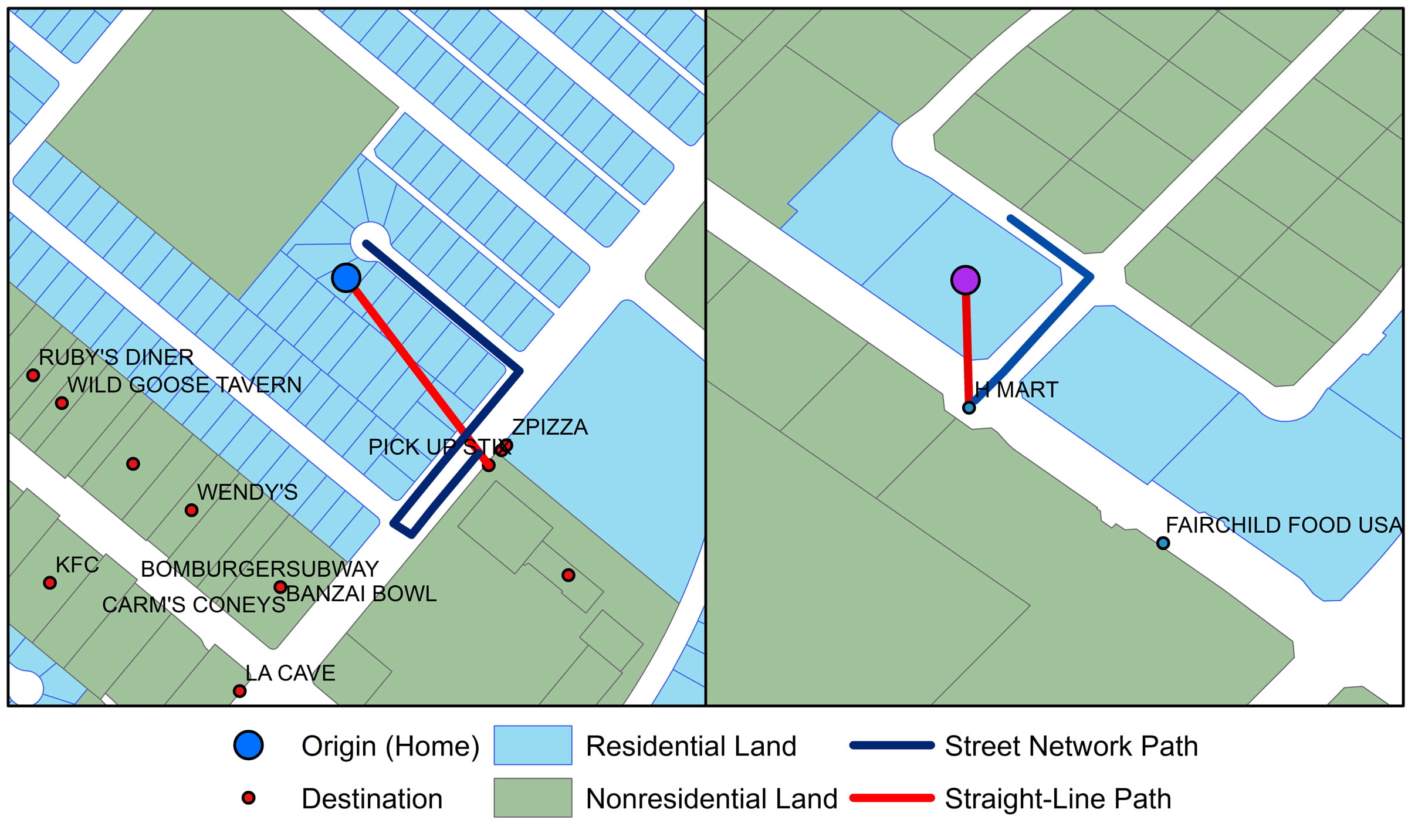Older, denser neighborhoods offer better access to everyday destinations, UCI study finds
Proximity of homes to restaurants and stores reduces traffic congestion, CO2 emissions

Irvine, Calif., May 3, 2017 – Residents of older, denser, lower-income neighborhoods and smaller, multifamily homes in Southern California can more easily access commonly frequented sites such as grocery stores, restaurants, clothing stores and gas stations, according to a recent report from the University of California, Irvine.
A research team with the School of Social Ecology’s Metropolitan Futures Initiative calculated the number of everyday destinations within a mile of each of the region’s more than 5 million homes. Closer destinations mean less driving, decreased traffic congestion and lower carbon emissions.
“Accessibility is how we accomplish [these] social goals,” said Kevin Kane, the MFI report’s lead author and a postdoctoral fellow in planning, policy & design. “In general, smaller, older, multifamily units have better access. However, in each of these cases, there are a handful of cities that don’t follow the trend.”
Orange County and Southern California as a whole have seen a large increase in multifamily housing in recent years. From the early 1990s to the mid-2000s, developers built huge numbers of single-family homes – and very few multifamily ones. But since the 2008 housing crash, multifamily construction has soared.
“There might be 1,000 new residents living on a fairly small piece of land, but if they have a lot of things they need nearby, there aren’t necessarily going to be these congestion impacts that a lot of planning commissions are worried about,” Kane said.
People in Los Angeles County – with the smallest, oldest and densest housing – had the highest access to everyday destinations, followed closely by Orange County. The Inland Empire lagged significantly. In addition, Orange County homes were in much greater proximity to open space, while Los Angeles County homes were the closest to train stations.
The study was meant, in part, to test some of the principles of New Urbanism, which advocates environmentally sustainable city designs that promote walkability and reduce sprawl. The team’s next step is to examine the effects of specific planning policies, such as main street development plans, zoning density bonuses, transit-oriented development plans and reduced parking requirements.
Other findings:
Long Beach had the largest share of homes, apartments and condos – 97 percent – within a mile of everyday destinations.
Dwellings in Beverly Hills had the most everyday destinations – an average of 1,573 – within a mile. It makes sense: Major commercial strips run through the middle of the city’s boundaries.
About the University of California, Irvine: Founded in 1965, UCI is the youngest member of the prestigious Association of American Universities. The campus has produced three Nobel laureates and is known for its academic achievement, premier research, innovation and anteater mascot. Led by Chancellor Howard Gillman, UCI has more than 30,000 students and offers 192 degree programs. It’s located in one of the world’s safest and most economically vibrant communities and is Orange County’s second-largest employer, contributing $5 billion annually to the local economy. For more on UCI, visit www.uci.edu.
Media access: Radio programs/stations may, for a fee, use an on-campus ISDN line to interview UCI faculty and experts, subject to availability and university approval. For more UCI news, visit wp.communications.uci.edu. Additional resources for journalists may be found at communications.uci.edu/for-journalists.